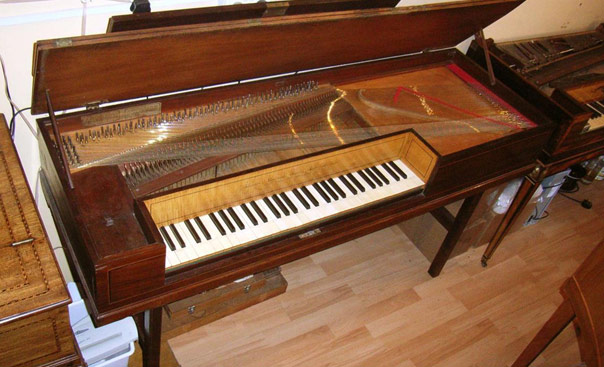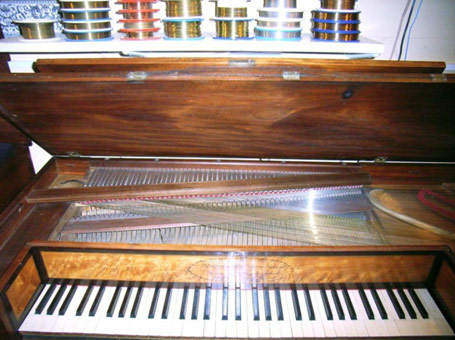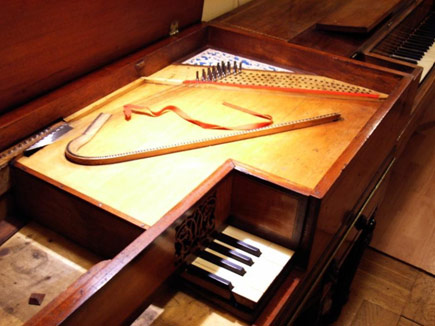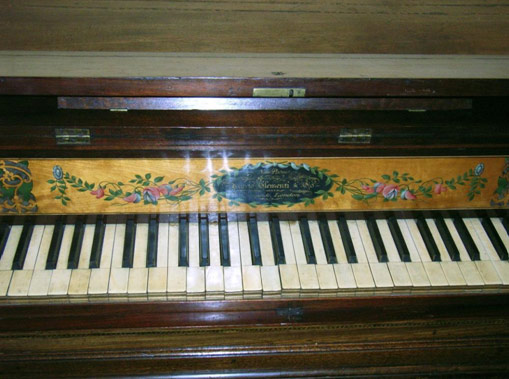The name of John Broadwood is significant in piano history. Born in 1732 in Oldhamstocks, near Cockburnspath, Scotland, he trained as a joiner, and travelled to London to work for Shudi, the famous harpsichord maker. He became a partner, married Shudi‟s daughter
Barbara, and inherited the business in 1773. He experimented with pianos, and produced his first (a square) in 1780. His pianos still had the simple English action as invented by Zumpe, but he patented a number of innovations, including an elegant and efficient brass under-damper system, and moving the tuning pins to the back of the case. The piano below was made in 1787, and is almost exactly the same as those made in 1784, Broadwood‟s first year of serious production.

Pianos of this basic design continued to be produced until about 1806. They very rarely had a pedals, and never handstops.
Two important innovations were made in the late 18th century. In 1786 John Geib patented an action with an escapement, which allowed the hammer to drop back after striking the string. This minimised the chance of a hammer bouncing and spoiling the sound, and at the same time gave better control at the pp end of the dynamic range. This paved the way for heavier hammers, thicker strings, and greater volume. Then in 1794, William Southwell (a distinguished maker from Dublin) patented two important developments: the so-called „Irish‟ damper, and the extra-note system to allow the extension of the compass to 5½ and then eventually 6 octaves. Both of these patents were bought-out by Longman & Broderip, and gave their pianos significant advantages over the competition (although they also continued to make simpler models for a few years).
The desire for the keyboard to go beyond five octaves was a natural one, although it is always difficult to say which came first – the instrument or the music. A few 5½ octave pianos were made without the „extra note‟ system, by having all the notes in one run, such as this lovely example by Houston.

The first Broadwood 5½ octave squares, made in 1793, also used this arrangement, but it does cause crowding of the notes and strings in the treble, which limits the available tone available from the necessarily tiny hammers. The „extra note‟ system (also called „additional keys‟) caused the top dozen or so hammers to attack through a slot in the soundboard, with the action underneath, seen here in this Clementi piano under restoration – just the „extra notes‟ action has been replaced, together with the corresponding strings.

The pianos carrying the names „Longman & Broderip‟ (later Clementi & Co) are still held in high regard, with their light and responsive action, and sweet tone. They are also frequently graced with beautiful flower paintings.

If only we knew the identity of the artist! |
